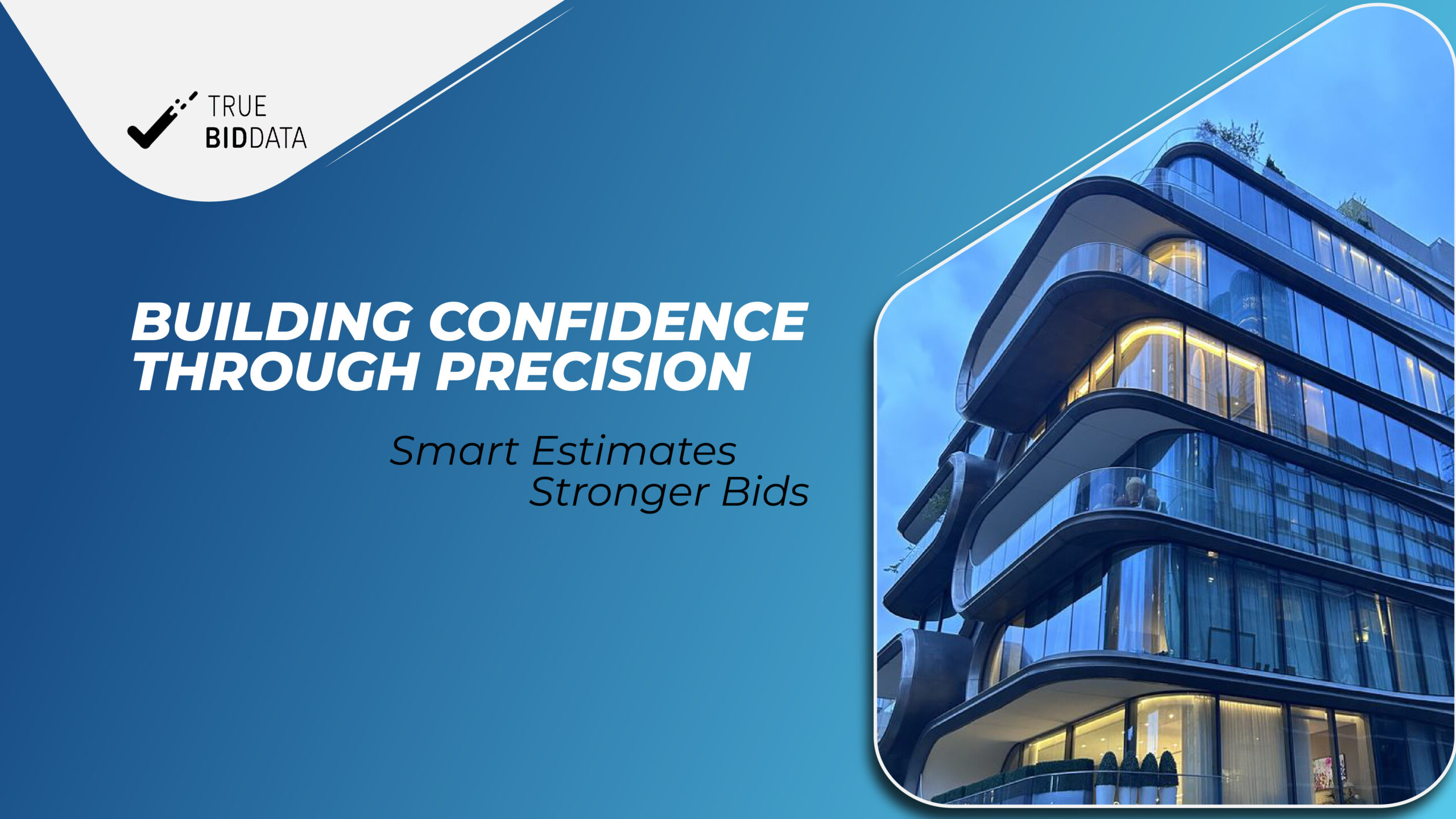
How Data Analytics is Transforming the Estimation of Cost of Project in NYC
In New York City’s construction and infrastructure sectors, the estimation of cost of project has evolved from manual calculation to intelligent analytics. Complex projects ranging from skyscrapers to transit systems—require precise forecasting to manage risk and maintain profitability.
At True Bid Data, analytics bridges the gap between data and decision-making. By integrating predictive modeling, real-time datasets, and digital strategy, construction professionals can estimate costs with greater precision and insight. In a city where every project faces intense regulatory oversight and financial scrutiny, data-driven estimation is not just an advantage it’s essential.
The Evolution from Traditional to Data-Driven Estimation
Traditional cost estimation relied heavily on human expertise, historical averages, and static data sources. While experience remains invaluable, today’s NYC projects demand agility that only data can provide.
Data analytics transforms the process by gathering and analyzing real-time inputs supplier pricing, labor rates, weather data, and productivity trends—to forecast accurate project costs.
With True Bid Data’s analytics framework, estimators can track cost fluctuations, benchmark performance, and uncover trends that shape smarter project planning. This transition from intuition to intelligence enables organizations to maintain precision in a fast-moving market.
Predictive Analytics: Forecasting Costs Before They Escalate
Predictive analytics uses historical and real-time data to model potential cost outcomes. This is particularly valuable for large-scale NYC projects where multiple variables such as logistics, supply chain, and regulatory delays can affect budgets.
For instance, a predictive model can simulate how material shortages or fuel price increases might alter project expenses. It can also estimate seasonal labor availability, allowing managers to plan staffing proactively.
With these insights, True Bid Data helps NYC firms anticipate challenges before they occur turning forecasting into a competitive advantage rather than a reactive task.
Digital Integration: Aligning Estimation with Strategy
A strong digital strategy connects cost estimation with broader project management objectives. By integrating estimation tools with procurement and scheduling systems, companies create a synchronized data environment where updates happen instantly.
Through cloud-based platforms, estimators can access the latest cost information, ensuring that every adjustment from design modifications to supply changes is reflected in real time.
True Bid Data’s digital ecosystem supports:
- Centralized cost monitoring across all project phases.
- Automated data entry and updates.
- Cross-team collaboration with shared dashboards.
This alignment ensures that estimation accuracy isn’t compromised as projects evolve an essential factor in New York City’s fast-paced construction market.
Using Geospatial Data to Improve Project Cost Accuracy
INew York City’s geography and regulatory landscape make every project unique. Incorporating geospatial analytics into the estimation of cost of project provides deeper insight into location-specific variables.
These include:
- Accessibility and delivery constraints in dense areas like Manhattan.
- Proximity to suppliers and labor hubs.
- Site-specific conditions such as soil composition and elevation.
By layering these insights, True Bid Data helps firms generate estimates that account for on-the-ground realities. This data-driven approach ensures that no hidden cost whether logistical or environmental goes unnoticed.
Data Transparency and Real-Time Collaboration
Transparency in cost estimation fosters accountability across stakeholders. Through data visualization and centralized dashboards, every participant from architects to financiers can view cost assumptions, updates, and justifications in real time.
Instead of relying on static reports, teams can interact with live data, drilling into categories like material costs, subcontractor performance, or time-based expenditures.
In NYC’s collaborative construction environment, this transparency reduces disputes, speeds up approvals, and builds confidence in shared financial data key to maintaining momentum on large-scale developments.
Sustainability and Lifecycle Cost Insights
As sustainability becomes central to urban development, integrating environmental metrics into cost estimation has become standard practice.
Data analytics enables project estimators to calculate both the short-term and long-term financial impact of eco-friendly materials, renewable systems, and energy-efficient designs.
For example, a lifecycle cost analysis may show that while green roofing systems increase initial costs, they reduce maintenance and energy consumption over decades. True Bid Data embeds these sustainability metrics into its estimation models, aligning financial and environmental objectives seamlessly.
AI and Automation: The Future of Project Cost Estimation
Artificial intelligence (AI) is redefining how estimation operates. AI systems analyze massive datasets from previous NYC projects to identify cost trends, forecast risks, and recommend cost-optimized strategies.
Automation ensures data consistency and eliminates time-consuming manual updates. When a project variable changes like a design modification or supplier delay—the cost model recalibrates instantly.
This not only accelerates the estimation process but also enhances accuracy, ensuring that every projection reflects the most current and reliable data available.
Through True Bid Data’s AI-powered estimation tools, NYC construction firms can focus more on strategic analysis and less on administrative tasks.
Strategic Insight: Turning Data Into Measurable Value
Beyond improving accuracy, data-driven cost estimation generates business intelligence. Firms can analyze completed projects to identify inefficiencies, benchmark performance, and refine bidding strategies.
By comparing past estimates against actual outcomes, True Bid Data helps organizations continuously improve their predictive models. This feedback loop turns each project into a source of learning, strengthening long-term competitiveness.
In NYC’s demanding construction economy, this analytical edge allows firms to anticipate shifts in cost structures, adapt quickly, and maintain profitability under pressure.
Conclusion: Building the Future with Data-Backed Precision
The estimation of cost of project in New York City is evolving into a discipline defined by analytics, transparency, and foresight.
Data empowers construction professionals to move beyond intuition—to estimate, plan, and build with intelligence.
At True Bid Data, predictive analytics, AI, and integrated digital systems turn raw information into actionable strategy. For NYC’s builders, this means more accurate estimates, stronger collaboration, and a smarter path to success.
In the modern cityscape, data isn’t just a tool for estimation it’s the foundation for innovation.




